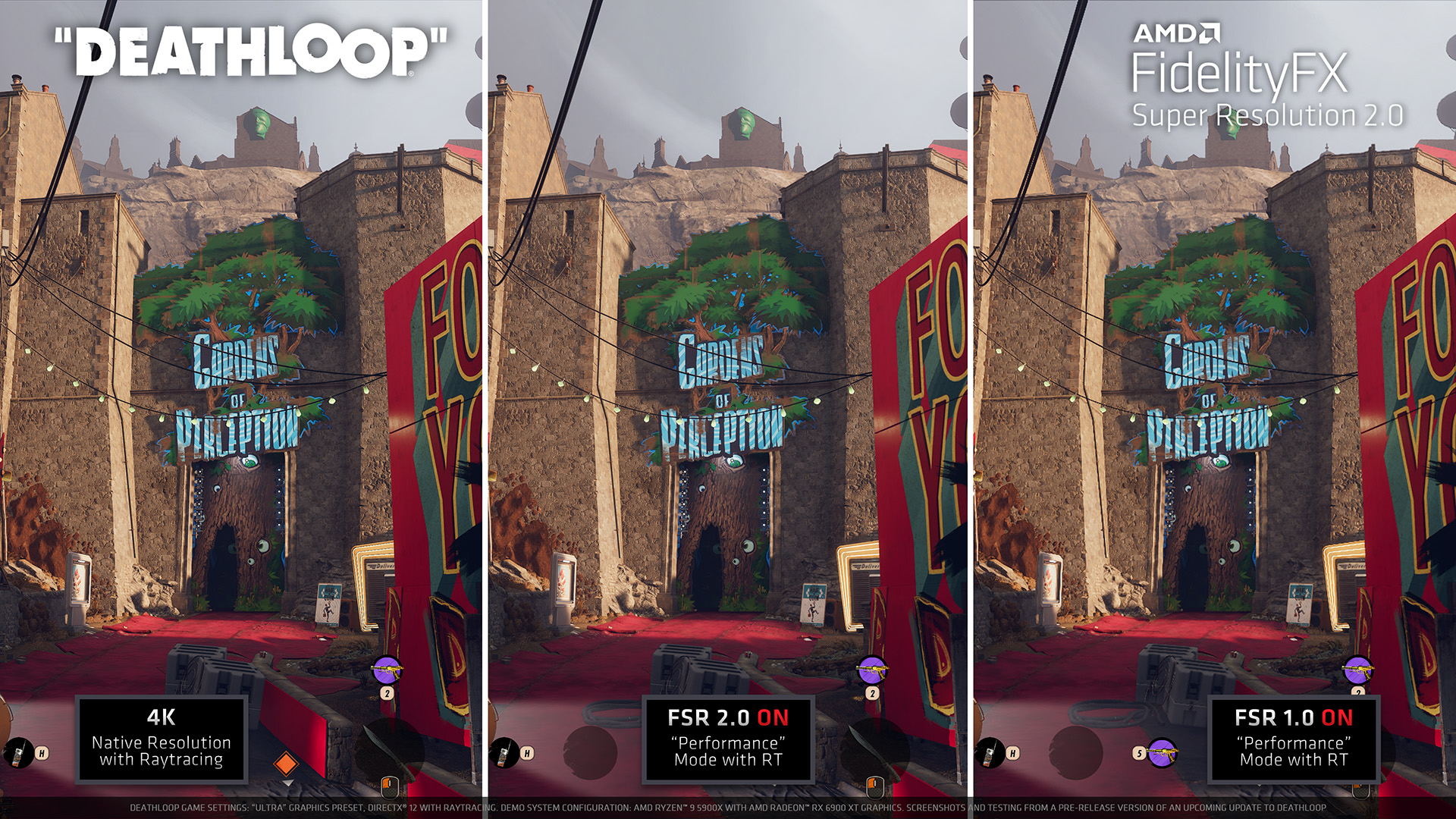AMD’s second-generation upscaling technology, FidelityFX Super Resolution 2.0, is headed to Xbox. The upscaling technology has already done a lot to boost our frame rates on PC at little expense to visual fidelity, but with the upcoming release of the new and improved version, it’s also making the jump to console.
“We want you to be able to port without restriction to any platform of your choice,” Colin Riley, senior developer technology engineer (core technology group), said during AMD’s recent GDC talk explaining the technology in greater depth.
FSR 2.0 is AMD’s upcoming upscaling technology on PC, and now console. It builds upon the FSR 1.0 technology that is available in games such as Back 4 Blood, God of War, and Deathloop. It’s essentially a way to render a game at a lower resolution, bank better performance, but then upscale those frames to look close to, if not as good as, the game if it were running natively.
FSR 2.0 is a big update for the technology coming in Q2 2022 to PC. Likely around April, we were told in a pre-briefing.
We’re also announcing that FidelityFX Super Resolution 2.0 will be fully supported on @Xbox, and will be available in the Xbox GDK for registered developers in their upcoming games. #FSR pic.twitter.com/T7y0dKlvwdMarch 23, 2022
Over at GDC, AMD also explained a little more about its upcoming upscaling technology and how it works. There was some great information in there of what to expect between all the algorithm chat. For one, FSR 2.0 will improve upon version 1.0 by replacing its spatial algorithm with a temporal one. Similarly, it will replace TAA antialiasing for a smoother image overall, and in a way that AMD says is fast and effective.
AMD says FSR 2.0 is not only superior to FSR 1.0, it will also be faster than some TAA antialiasing techniques while delivering impressive antialiasing itself: “FSR 2.0 is incredibly fast.”
“We want you to be able to port without restriction to any platform of your choice.”
Colin Riley, AMD
AMD is rolling out new algorithms to deal with some of FSR’s shortcomings, too. These include locking thin pixel-wide areas to prevent flickering and invisible or dimmed features in very thin in-game features, such as a wire fence. It’s also rolling out support for Dynamic Resolution Scaling and HDR that avoids artefacts and keeps the image looking sharp.
Speaking of looking sharp, there’s also a sharpening feature in FSR 2.0.
It will be up to developers to implement FSR 2.0, and a GDKX sample will be made available to registered Xbox developers soon. Whether anyone takes up AMD on the offer is yet to be seen, but following AMD’s talk over at GDC, it sure sounds like that shouldn’t be a big ask to implement FSR 2.0.

AMD’s made it specifically easier for games with support for Nvidia’s competing DLSS 2.0 technology to implement FSR 2.0, which might not matter much on console, but could aid its rollout on PC massively. It says these games could be made to work with FSR 2.0 in less than three days. It also says it shouldn’t take too much longer to add FSR 2.0 to games with the UE4/UE5 plugin.
Failing either of those, games with decoupled render and display resolutions and that use TAA anti-aliasing should only take a little while longer. Followed by games without TAA and then those without the prerequisite attributes that make upscaling easier, which AMD says will take up to four weeks to sort out for FSR 2.0.
As for performance, AMD already mentioned that it expects big gains with FSR 2.0 over FSR 1.0, and it’s doubled down in its recent GDC talk: “FSR is incredibly competitive when it comes to performance comparisons,” Riley continued.
And it could deliver serious performance gains on the RDNA 2-powered Xbox consoles. Both the Xbox Series X and Series S are powered by AMD RDNA 2 GPUs and Ryzen CPUs. As is the PlayStation 5, so you could see this technology make it across the console landscape over time. And who doesn’t want more performance for little cost?
It all sounds very promising, and while RDNA 2 is cited as running FSR 2.0 better than other GPU architectures, FSR 2.0 will work cross-platform. AMD says it will work with developers to make sure that any features that slow down or don’t work as well on competitors’ cards, or even older Radeon generations, will be disabled to ensure top performance across any graphics card.
This definitely feels like AMD’s stepping up its upscaling game massively, and we can only hope the end result is as impressive as it sounds. After all, upscaling might be one of the best ways to improve your frame rate in 2022 and beyond.

